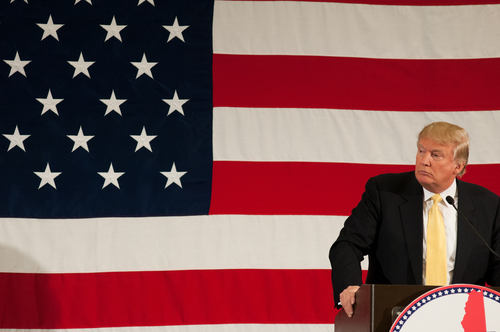His gut-driven response has led to confusion and confrontation within the federal government. Officials have convened ongoing meetings at the White House over how to interpret the executive order, including on Thursday night and Friday. Different agencies, including Customs and Border Protection and the Justice Department, haggled with the White House over how the order and Trump’s “zero-tolerance” policy align in terms of which migrants are referred for prosecution.
Meanwhile, the majority of the 2,300 children who have been separated from their parents remain so, with little indication of how they might be reunited.
The continued fallout over family separations at the US border amounted to a high-stakes experiment for how Trump can operate outside the normal guardrails of the presidency. Wary of anyone else’s counsel, he repeatedly discarded advice from his chief of staff on how to proceed. He ignored legal warnings from his top lawyer. And he acted as his own White House communications director, a position that’s now been vacant for months.
The result was pandemonium.
In defense of his policy, Trump felt emboldened to repeat mistruths and outright lies, day after day, during extended and mostly improvised television appearances. For migrant parents still separated from their children, the President’s actions were largely ineffective. Even Trump’s political allies feel jolted and uncertain.
Inside the administration
Inside the West Wing, beleaguered staffers watched the events of the past week unfold with unenthusiastic anticipation of what’s to come. Many are still eying the exits — including chief of staff John Kelly and White House counsel Don McGahn — but with few qualified staffers ready to replace them some feel obliged to remain on. Departures still come regularly, including this week the operations chief Joe Hagin.
The aide most identified with Trump’s hardline stance, Stephen Miller, has drawn barbs from colleagues who accuse him of overseeing what amounted to a chaotic mess. Some have harkened back to his role in executing the travel ban on residents of certain Muslim majority countries, another bumpy rollout mired in legal complications. But there’s little to indicate his standing with the President was diminished; as Trump was signing the executive order on Wednesday, staffers saw Miller laughing on a bench in the Rose Garden. He later accompanied Trump aboard Air Force One to Duluth.
The crisis did present an opening for Homeland Security Secretary Kirstjen Nielsen to improve her standing with the President, who had dressed her down during meetings for not being tough enough on border security. He watched with pleasure her contentious briefing with reporters on Monday, which was delayed for hours as she prepared in the West Wing. But her elevation has come with costs: she was loudly heckled at a Mexican restaurant on Wednesday and protesters assembled at her townhouse in Virginia on Friday.
Attorney General Jeff Sessions hasn’t been granted a similar reprieve. Already detested by Trump for his recusal from the Russia investigation, Trump told people this week his attorney general had contributed to the political disaster that he was left to clean up. When Trump saw a clip of Sessions on cable news discussing the “zero-tolerance” policy that led to the separations, he sighed dramatically and cursed, a person who saw the episode said.
Political prism
As midterm elections approach, Trump is seen by those inside the White House as more likely to act out in ways he believes can galvanize his conservative base. His upcoming schedule is stacked with campaign events, and he’s expressed little enthusiasm for other types of travel, aides say. Even as he worked to explain his immigration decisions this week, Trump repeatedly returned to the November vote.
“The worse everything looks, they think the better they’re going to do with respect to the blue wave, which is turning out, frankly, to be a red wave, if you look at the polls,” Trump said during a Cabinet meeting Thursday. “I think we’re going to have a red wave, not a blue wave.”
In private meetings this week, Trump cast the immigration issue as a political one, according to people who heard his comments, likening it to a culture wars matter akin to kneeling NFL players or Confederate statues. He insisted he was doing right by his supporters and offered little indication he would cave to outside pressure.
Even in public, he offered few signs he would let up. He told a crowd of small business owners on Tuesday that his policy could act as a deterrent — “they have to know they can’t get in” — a remark that reflected a determination he’d made in private with advisers.
Entreaties from his daughter and adviser Ivanka and first lady Melania Trump were initially met with resistance. Trump was unenthusiastic when presented with a proposal for his wife to travel to the border to visit a detention facility, according to a person familiar with the situation, but later endorsed the plan.
Through it all, the President told people he risked appearing weak if he or his administration reversed position. He verbalized the internal struggle on Wednesday morning.
“If you’re weak, which some people would like you to be, if you’re really, really, pathetically weak, the country’s going to be overrun with millions of people,” he said, gesticulating to illustrate the dueling options. “And if you’re strong, then you don’t have any heart. That’s a tough dilemma. Perhaps I’d rather be strong, but that’s a tough dilemma.”
Change of course

